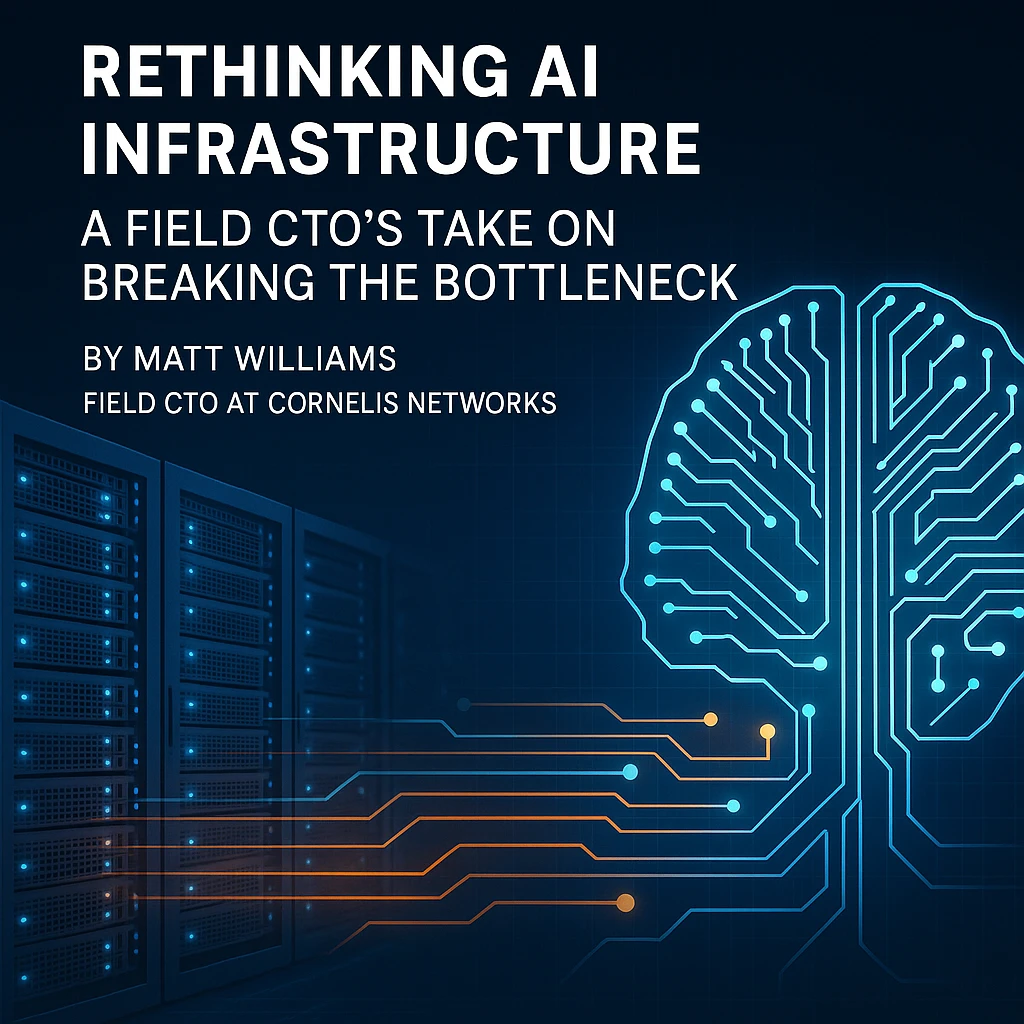Rethinking AI Infrastructure: A Field CTO’s Take on Breaking the Bottleneck

The recent whitepaper we released—“Improving the Economics of Large-Scale AI”—dives deep into a dilemma I see every day: our AI ambitions are outpacing our network reality. As Field CTO at Cornelis Networks, I’ve witnessed firsthand how traditional infrastructure struggles to keep up with today’s large-scale AI workloads. It’s not just a technical issue anymore—it’s an economic one.
The Networking Crisis No One Talks About
AI growth has been relentless. But while compute gets all the headlines, the real bottleneck quietly choking performance is networking. From massive training jobs to latency-sensitive inference, data movement is the Achilles heel. And when your GPUs are idling—waiting for data that can’t move fast enough—you’re not just wasting time, you’re burning through budget.
We’ve reached a point where network-induced delays are stalling innovation. Missed SLAs, spiraling energy costs, underutilized accelerators—these are symptoms of infrastructure that wasn’t built for the AI era.
Why CN5000 Was Built
That’s why we engineered the Cornelis® CN5000 Omni-Path®. This isn’t just a new switch or a faster link—it’s a complete rethink of how to manage AI traffic at scale. With deterministic performance, deep telemetry, and advanced congestion control, CN5000 isn’t patching a broken system; it’s setting a new standard.
Here’s what excites me the most:
Eliminating Tail Latency: With intelligent flow control, we’re tackling the tail latency that derails real-time inference and distributed training.
Consistent bandwidth performance: Our advanced Fine-Grained Adaptive Routing ensures AI training traffic moves at top speed, accelerating time-to-results.
Peak Accelerator Utilization: We’re ensuring your AI hardware works as hard as it was designed to, no longer waiting for data to arrive.
The Stakes Are High
Every millisecond of delay translates into missed insights and revenue. In industries like healthcare or finance, even slight lags can have critical consequences. And as AI models grow in size and scope, these problems will only get worse unless we build infrastructure that scales with them.
With CN5000, we’re proving that high-performance networking doesn’t have to be tomorrow’s dream. It can be today’s reality.
Let’s stop letting networks hold back what AI can do.
Interested in a technical deep dive? Drop us a line at sales@cornelisnetworks.com.